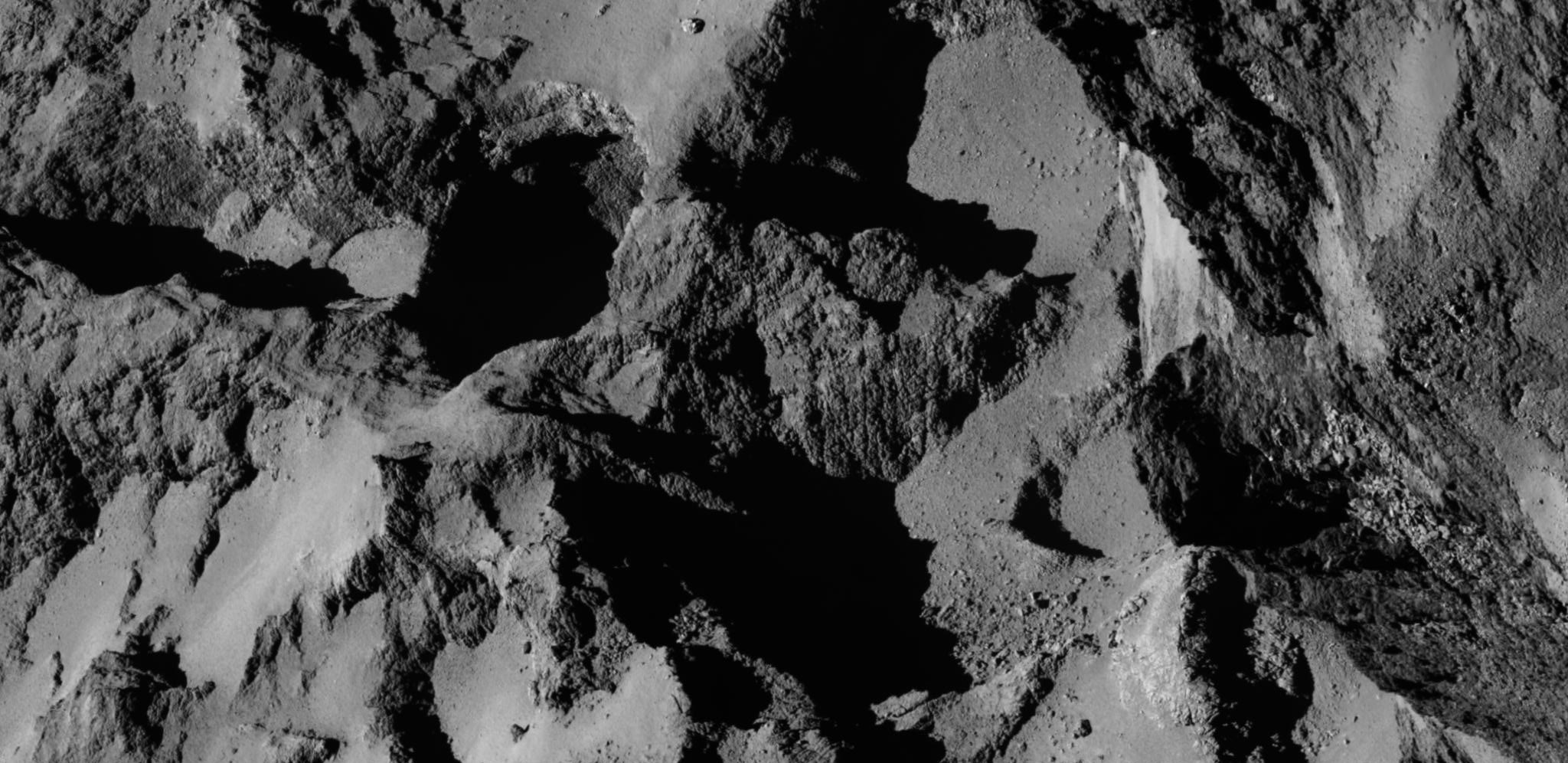
Rosertta Update
July 2015 :
As we are continuing to monitor Dawn at Ceres, and New Horizons at Pluto, another breakthrough mission seems to have been lost in the dwarf planet hype. Rosetta, traveling alongside Comet 67P/Churyumov-Gerasimenko, is still sending back incredible information on the comet, as craft and comet are moving together in the vicinity of the Sun.
Rosetta, in observing the comet, has apparently found giant sinkholes on the comet’s surface. It appears they were probably created the same way those on Earth happen: Surface material above underground cavernous areas suddenly collapse under their own weight. They appear to be several hundred feet across and possibly the same depth. It also seems as if they were formed at different times, as shown by the differing types of surfaces of their walls.
So far, over a dozen of these very large holes have been sighted, mostly on the “northerly” regions of the surface. None have apparently been located on what is considered the “south,” as this side heats up more as Comet 67/P glides around the Sun, apparently speeding up erosion, leaving that part of the surface quite flat.
You might recall the tiny lander, Philae, that, in attempting to land on the comet’s surface, had some problems: It bounced off, relanded, finally setting down in what seemed a part of the comet that wasn’t conducive to the lander’s solar array picking up much needed sunlight; however, just a couple weeks ago, it “woke up,” bidding the ESA’s Space Operations Centre a long-awaited salutation. It apparently was in hibernation mode, and the prospects of receiving more transmissions from it seems highly probable.
Rosetta itself will be flying around the comet, staying with it and continuing to operate as 67/P passes around the Sun and begins to travel back outward, away from the inner solar system. The space craft, and all of us, recently received some very good news, as the mission has been extended by nine months, meaning we will be able to receive information from Rosetta, and hopefully Philae, until September, 2016.
ESA/Rosetta/MPS for OSIRIS Team MPS/UPD/LAM/IAA/SSO/INTA/UPM/DASP/IDA



